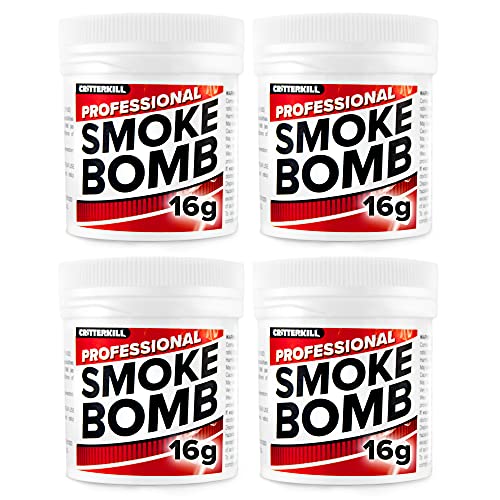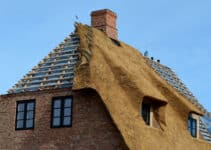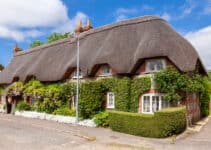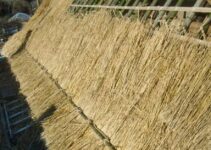Wasps can be a fairly common pest in thatched roofs because it presents an almost perfect nesting site for them. Of course, this isn’t great for you if they decide to nest in your roof.
How you deal with them ultimately depends on the time of year, your local environment, and whether you consider it to really be an issue.
In this article, you’ll learn how to deal with wasps in your thatched roof. First, let’s cover some background information that’ll be helpful when deciding on a solution.
Are Wasps in a Thatched Roof a Problem?
Deciding whether wasps in a thatched roof are a problem is fairly subjective. They don’t present a significant risk to your roof or its support structure.
While wasps do use wood to build their nests (they typically chew seasoned/dry wood), a single nest won’t use more than a few grams.
Also, they shouldn’t do any real damage to the thatch. The wasp’s queen will have found her way in through an existing hole rather than making a new one.
They only need tiny holes to get in, so don’t take a wasp nest as a sign that your roof is damaged.
Finally, there’s the risk wasps present to you and your family. Provided you leave them alone, wasps shouldn’t bother you.
They’re more aggressive than bees (and hornets), but they won’t sting unless they’re provoked. And on that note, trying to destroy their nest will make them angry.
So, to answer the question, are wasps in a thatched roof a problem, it’s generally a no. They get more aggressive in autumn, but this is because they’re running out of food while preparing for hibernation.
However, worker wasps die off, leaving only the queen alive. But she won’t hibernate in the existing nest and will instead find somewhere warm.
By extension, you don’t have to worry about them using the same nest the following year.
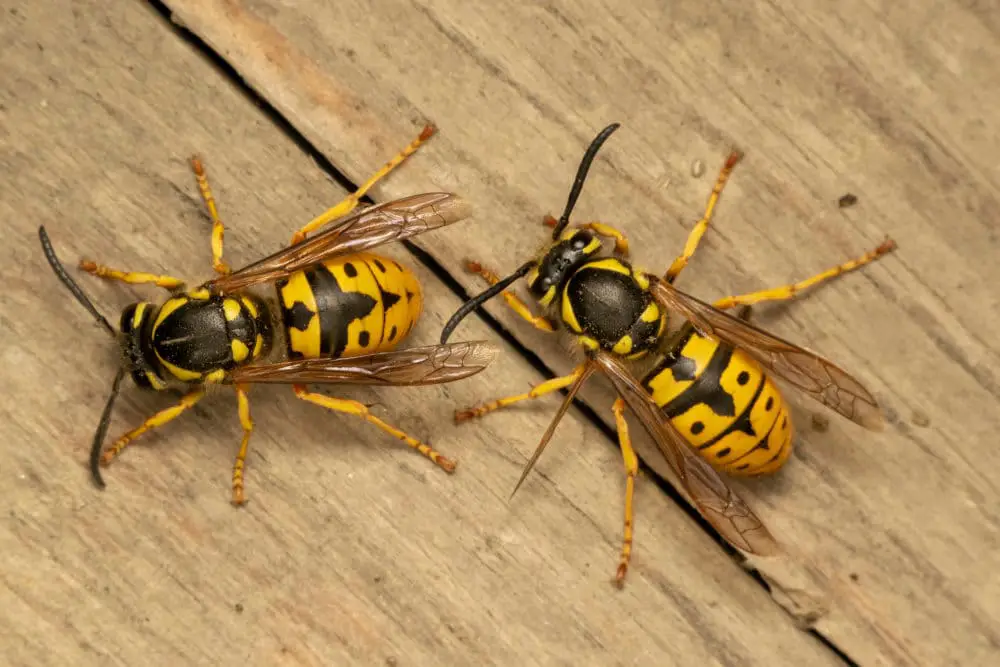
Are Wasps in a Thatched Roof Common?
Although there aren’t any objective stats for how often wasps nest in a thatched roof, they’re believed to be one of the more common pests. This is because it’s much easier for them to get in than other creatures (such as rats and squirrels), simply because they’re smaller.
It’ll also depend on where you live, particularly if you’re in a more rural area. Generally, insects are more common in rural settings because of air quality, food, and so on.
Wasps can be fairly common in more built-up areas, but still less so than in the countryside.
If you’ve had a wasps’ nest in your thatched roof before, it doesn’t make it any more likely that it’ll happen again. What it probably demonstrates is that your roof (and attic) provides decent living conditions for wasps, so they may be back.
Of course, you can prevent this by changing these conditions.
Why Do Wasps Nest in a Thatched Roof?
The simple explanation is that a thatched roof and the cavity underneath provide almost perfect living conditions for wasps.
They like areas that are sheltered from the elements and, by extension, are fairly warm. You’ll commonly find them in wall cavities, under the eaves or in sheds and garages.
It’s obviously fairly easy to tell if wasps are nesting in your thatched roof. The first thing to look for is a constant stream of wasps flying in and out of holes.
Generally, they’ll stick to one hole if their nest is nearby.
Another thing to look for is the sound of them buzzing, which you may even be able to hear indoors. If you go into your attic to inspect the nest, look for signs of activity. Again, live wasps are the clearest sign that a nest is active.
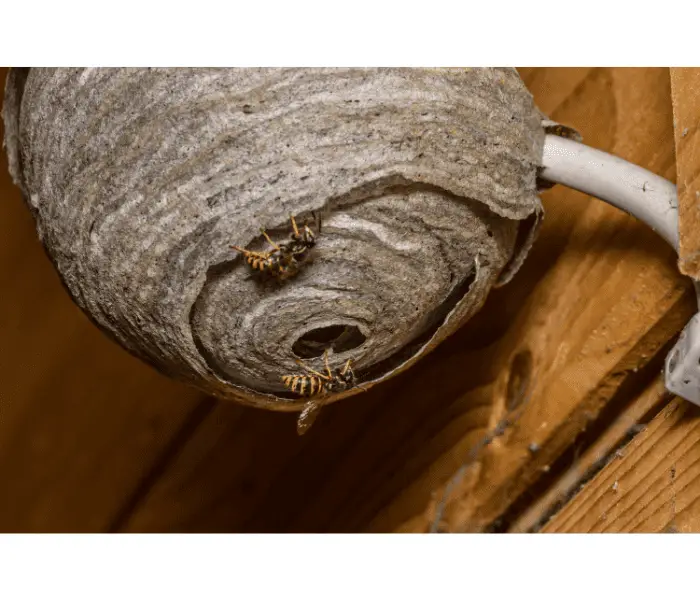
How Do I Get Rid of Wasps in My Thatched Roof?
Dealing with wasps in a thatched roof shouldn’t be too difficult. That said, it’ll depend on the size of the nest, how easily you can access it, and your confidence in dealing with it. Here are some options.
1. Wasp Poison
Wasp poison powder is a fairly easy solution for dealing with a wasps’ nest. You squirt it into the nest and it’ll kill wasps on contact.
There are options for coating food, which the wasps then take back to the nest. However, it risks poisoning other wildlife, so it’s generally not advised to do this.
2. Smoke Bombs
Smoke bombs do pretty much the same thing, except you don’t need to stand there puffing them into the nest! You activate the bomb and then walk away, and it should kill all the wasps.
It’s a more effective option than poison because it fills the air, so is more likely to kill the whole nest.
3. Professional Exterminator
If it’s a big nest or you don’t want to risk getting hurt, a professional exterminator is the most obvious solution. They’ll likely use wasp poison and should have the nest cleared in a day.
However, some might advise it takes a few days just to make sure they catch all the stragglers. Although it’s the most expensive option, it probably provides the highest guarantee that all the wasps will die.
4. Stop Them from Coming Back
While this isn’t an option for removing the nest, it makes sense to stop wasps from coming back. Wasps don’t like clove, lemongrass and geranium essential oils, so you could liberally apply these to your attic.
It also helps to fill the gaps they used to get in. However, this is pretty difficult with a thatched roof. If you’re concerned, speak to a thatcher and see what they suggest.
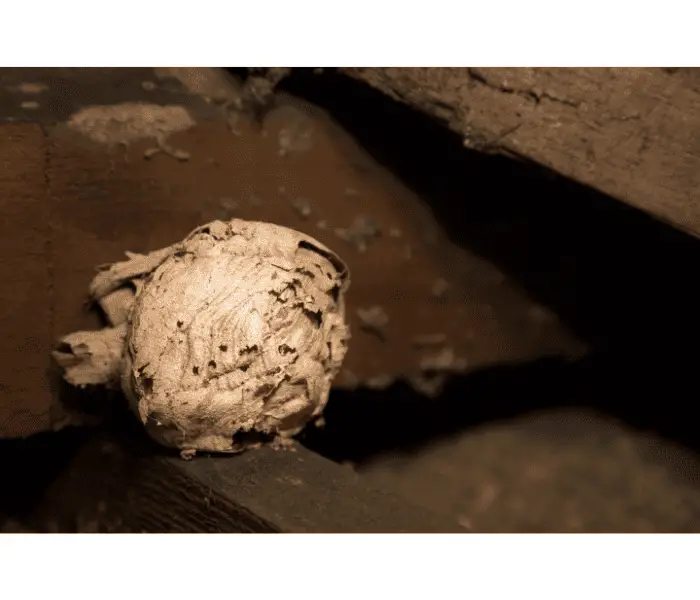
Final Thoughts
Hopefully, these tips should help you get rid of that wasp nest in your thatched roof. That said, if the wasps aren’t getting into your house, the easiest option is to just ignore them.
They’ll die off in the autumn and you shouldn’t have to deal with them again. Not only is this the safest option, it’s also the cheapest!

